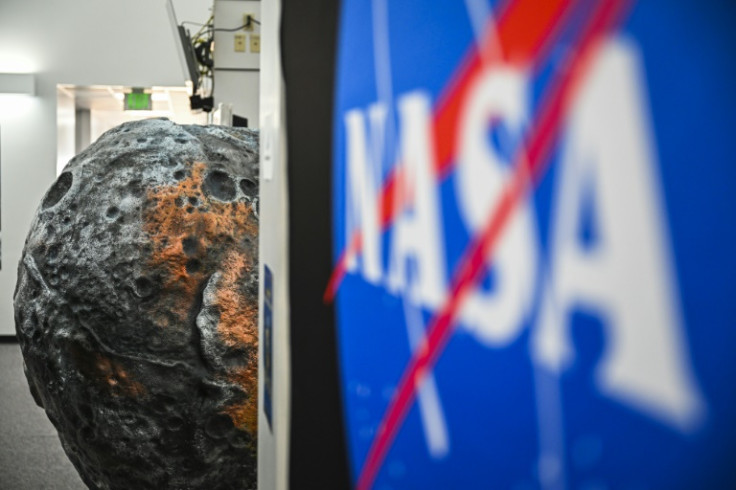NASA Partners With IBM To Announce AI Project To Address Climate Challenges
In recent months, widespread heatwaves, severe flooding and natural disasters have highlighted the serious nature of the climate crisis.

The International Business Machines Corporation, also known as IBM, announced today that they are partnering with Space Agency NASA to create an AI model for weather and climate applications.
The two American agencies will pool their combined knowledge in earth science and AI to try and tackle the climate crisis and weather challenges in ways that traditional methods can't.
IBM will apply its geospatial AI technologies to NASA's satellite equipment, to create a model that offers "significant advantages over existing technology".
The collaboration will initially focus on the analysis of urban heat islands in the United Arab Emirates (UAE); reforestation across Kenya; and climate resiliency in the United Kingdom (UK).
"Climate change is a real and pressing issue that we must find new ways to address as quickly and efficiently as possible, including through today's most advanced AI technologies," said Alessandro Curioni, IBM Fellow and Vice President, of Accelerated Discovery at IBM.
"AI foundation models utilizing geospatial data can be a game-changer because they allow us to better understand, prepare and address the many climate-related events affecting the health of our planet in a manner and speed never before seen. We are hopeful these technologies can help accelerate the rate at which we derive and apply solutions for a safer and healthier planet for future generations."
In recent months, widespread heatwaves, severe flooding and natural disasters have highlighted the serious nature of the climate crisis.
A new study published in the journal BMJ has claimed that air pollution caused by fossil fuels is killing 5 million people every year across the world.
The study has attributed 61 per cent of the total 8.3 million deaths to ambient air pollution in 2019. More than half of these deaths were associated with conditions such as ischemic heart disease (30 per cent), stroke (16 per cent), chronic obstructive lung disease (16 per cent), and diabetes (6 per cent).
According to a report by the UN's World Meteorological Organisation (WMO), The levels of climate-heating greenhouse gases in the atmosphere reached record highs last year.
The three main greenhouse gases are carbon dioxide (CO2), methane, and nitrous oxide. CO2 is the most important, accounting for around 66 per cent of the warming effect. The report says that the concentration of carbon dioxide, the main greenhouse gas, is 50 per cent higher than what it used to be before the Industrial Revolution.
Today, the Cop28 Climate Conference began with a stark warning: 2023 will be the hottest year on record in human history.
World leaders will discuss in the coming days how to tackle the unprecedented emergency they face, with the use of AI undoubtedly a big part of the solution.
IBM continues to advance its AI model strategy in part through the creation, training, fine-tuning and open-sourcing of foundation models - models that can be used for different tasks and apply information from one situation to another - designed for domains beyond natural language, including geospatial applications.
These models, which are trained on geospatial information such as satellite images, present a unique opportunity to address climate change because unlike traditional AI models tailored for specialized tasks, geospatial foundation models - encompassing satellite and weather data - create knowledge representations from petabytes and exabytes of climate-relevant data that can facilitate accelerated and streamlined discovery of environmental insights and solutions.
These models can also be fine-tuned and applied across a multitude of areas driving or revealing climate change, from flood detection to fire scars.
The sheer amount of climate-relevant data the model is being trained on includes petabytes and exabytes of information. For context, a petabyte is the equivalent of around 20 million tall filing cabinets or 500 billion pages of standard printed text, and an exabyte is 1,000 petabytes.
This opens up far more possibilities for fine-tuning climate change applications, ranging from flood detection to fire scars.
At the moment, AI is widely used in meteorological forecasting and other climate change data applications, but pooling resources between NASA and IBM could open up unforeseen possibilities.
AI is already being applied to help enhance our understanding of climate change.
Earlier this month, The International Business Times reported that scientists were utilising AI to map and track colossal icebergs from space.
The research was led by Dr. Anne Braakmann-Folgmann who was doing her doctoral research at the Centre for Polar Observation and Monitoring at the University of Leeds.
The study was featured in the Cryosphere journal this month, showcasing the potential of machine learning in the live monitoring of distant and hard-to-reach regions.
The AI can accomplish this task within one-hundredth of a second, a speed markedly superior to manual delineation.
Moreover, it exhibits a level of accuracy surpassing that of current automated systems, which frequently encounter challenges in discerning icebergs from other elements in the images.
This cutting-edge technology, developed by a team of researchers, promises to revolutionise our ability to monitor these mammoth structures and their movements in near-real-time.
© Copyright IBTimes 2025. All rights reserved.






















